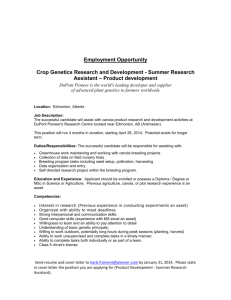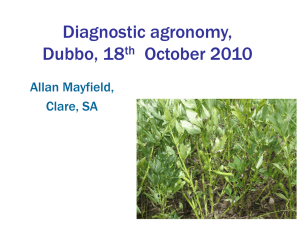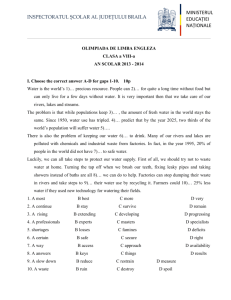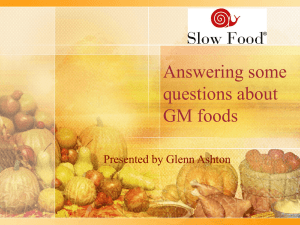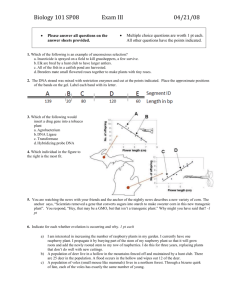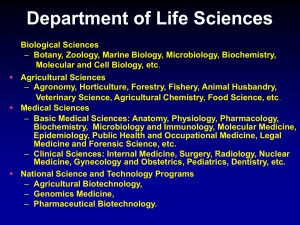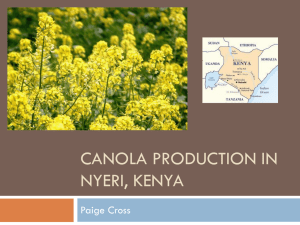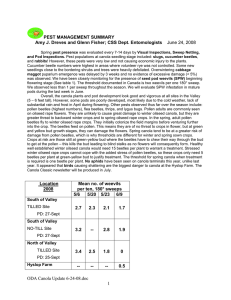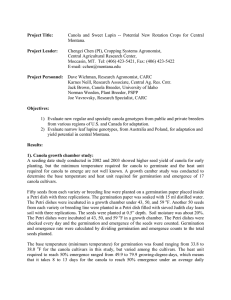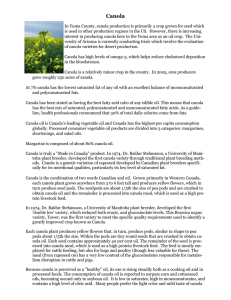the distribution of benefits and spillovers within an ag
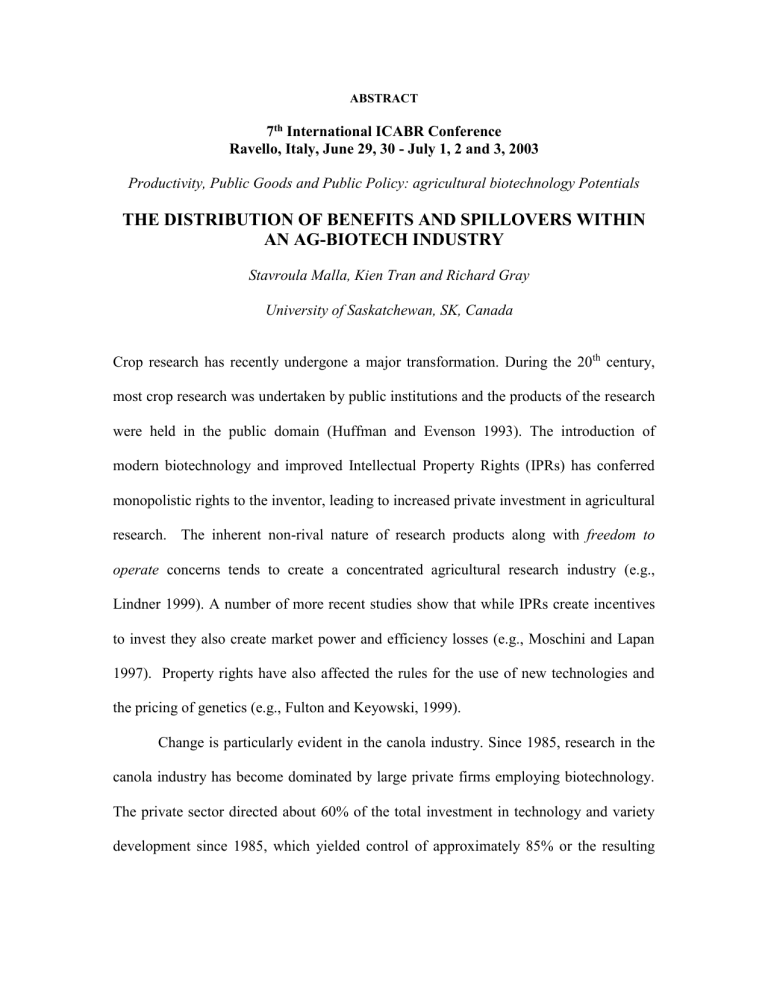
ABSTRACT
7 th International ICABR Conference
Ravello, Italy, June 29, 30 - July 1, 2 and 3, 2003
Productivity, Public Goods and Public Policy: agricultural biotechnology Potentials
THE DISTRIBUTION OF BENEFITS AND SPILLOVERS WITHIN
AN AG-BIOTECH INDUSTRY
Stavroula Malla, Kien Tran and Richard Gray
University of Saskatchewan, SK, Canada
Crop research has recently undergone a major transformation. During the 20 th century, most crop research was undertaken by public institutions and the products of the research were held in the public domain (Huffman and Evenson 1993). The introduction of modern biotechnology and improved Intellectual Property Rights (IPRs) has conferred monopolistic rights to the inventor, leading to increased private investment in agricultural research. The inherent non-rival nature of research products along with freedom to operate concerns tends to create a concentrated agricultural research industry (e.g.,
Lindner 1999). A number of more recent studies show that while IPRs create incentives to invest they also create market power and efficiency losses (e.g., Moschini and Lapan
1997). Property rights have also affected the rules for the use of new technologies and the pricing of genetics (e.g., Fulton and Keyowski, 1999).
Change is particularly evident in the canola industry. Since 1985, research in the canola industry has become dominated by large private firms employing biotechnology.
The private sector directed about 60% of the total investment in technology and variety development since 1985, which yielded control of approximately 85% or the resulting
varieties. At least 75% of the canola acreage in 2000 was subject to some form of annual contract. (Gray et.al., 2001).
Despite the importance of these changes in crop research, the lack of firm specific data has hampered the analysis and understanding of the biotech industry. Three important empirical issues that have not been adequately examined in the literature include: 1) the extent of firm-to-firm spillovers in the research industry, 2) the distribution of rates of return within the biotech industry, and 3) the distribution of the gains from research in the supply chain.
The objective of this study is to empirically examine these issues in the canola industry. The firm-to-firm spillovers affect the proportion of benefits captured by the investing firm and speaks to completeness of intellectual property rights and the role of government. The pattern of individual firm returns will empirically determine the returns to scale in the industry, whether returns are sporadic versus steady returns over time and the extent to which there is uniformity across firms. The distribution of the gains will determine the extent to which the gains from research are captured by the research firms versus farmers and the downstream industry. This has implications for public support and rent seeking in the industry.
The methodology used combines a number of data sources to create a firm-byfirm panel data set for the costs and returns for canola research in Canada. The data set is analyzed in a number of ways to address the issues outlined above. This exploratory paper is intentionally broad in scope and is intended to provide an overview of empirical evidence for a number of important issues. The feedback from the conference will allow
the authors to refine the analysis and to identify additional issues that can be addressed with this unique data set.
References
Fulton, M.E. and L. Keyowski. “The Impact of Technological Innovation on Producer
Returns: The Case of Transgenic Canola.” Presented at the NE-165 conference,
Transitions in Agbiotech: Economics of Strategy and Policy . Washington, DC,
June 24-25, 1999.
Gray, R., S. Malla, and P. Phillips.
“Industrial Development and Collective Action.” In
The Biotechnology Revolution in Global Agriculture: Invention, Innovation and
Investment in the Canola Sector . P. Phillips and G.G. Khachatourians, eds.,
Chapter 6. Wallingford, Oxon, UK: CABI Publishing, 2001.
Huffman, W.E. and R.E. Evenson. Science for Agriculture: A Long-Term Perspective.
Ames, Iowa: Iowa State University Press, 1993.
Lindner, R. “Prospects for Public Plant Breeding in a Small Country.” Presented at the
ICABR Conference, The Shape of the Coming Agricultural Biotechnology
Transformation: Strategic Investment and Policy Approaches from an Economic
Perspective
. University of Rome, “Tor Vergata,” Rome and Ravello, June 17-19,
1999.
Moschini, G. and H. Lapan. “Intellectual Property Rights and the Welfare Effects of
Agricultural R&D.”
American Journal of Agricultural Economics 79(1997):
1229-42.
